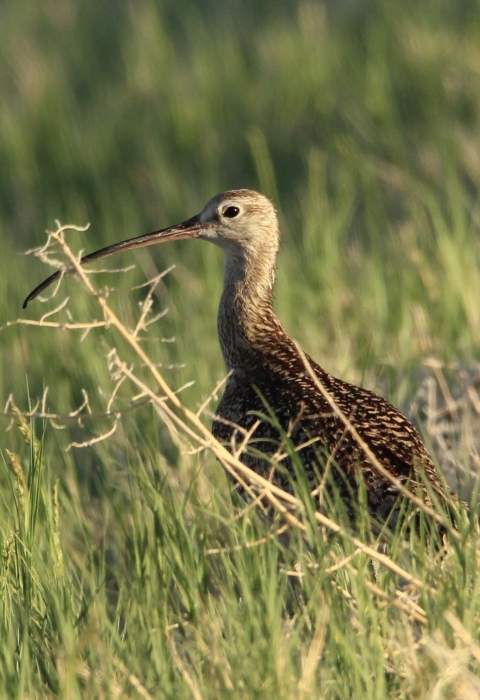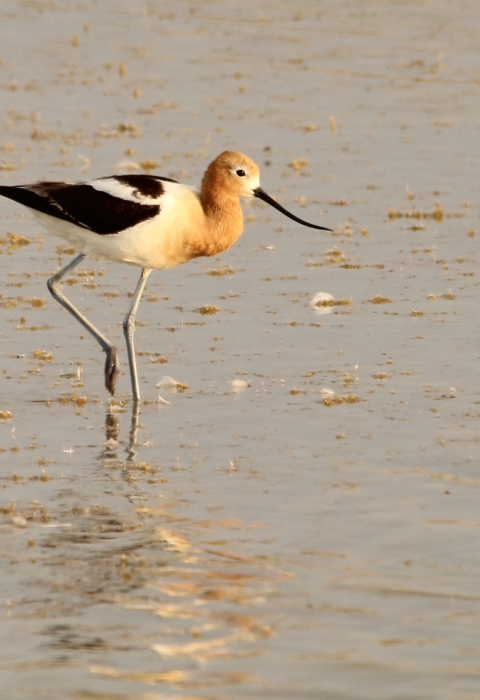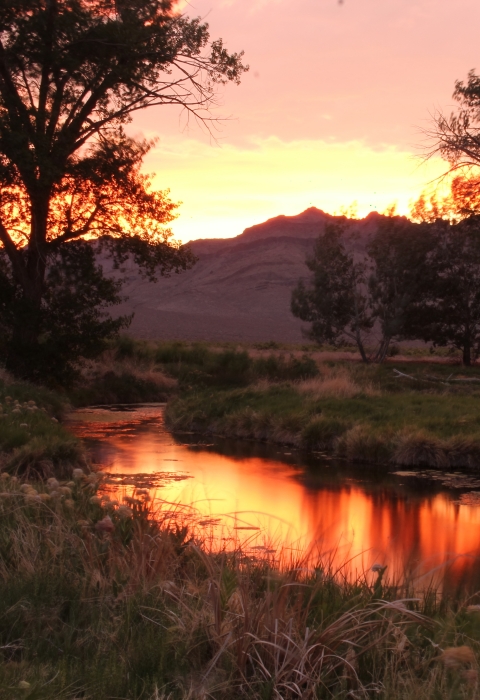What We Do
Wildlife conservation is at the heart of the National Wildlife Refuge System. It drives everything on U.S. Fish and Wildlife Service lands and waters managed within the Refuge System, from the purposes for which a national wildlife refuge national wildlife refuge
A national wildlife refuge is typically a contiguous area of land and water managed by the U.S. Fish and Wildlife Service for the conservation and, where appropriate, restoration of fish, wildlife and plant resources and their habitats for the benefit of present and future generations of Americans.
Learn more about national wildlife refuge is established to the recreational activities offered to the resource management tools used. Using conservation best practices, the Refuge System manages Service lands and waters to help ensure the survival of native wildlife species.
The Refuge provides managed wetland habitats for a diversity of species, with priority given to a variety of migratory birds, including wading birds, shorebirds, and waterfowl, as well as to species at risk of becoming listed as federally endangered. Management activities include prescribed burns, moist soil management, invasive species invasive species
An invasive species is any plant or animal that has spread or been introduced into a new area where they are, or could, cause harm to the environment, economy, or human, animal, or plant health. Their unwelcome presence can destroy ecosystems and cost millions of dollars.
Learn more about invasive species management, and recreation management.
Management and Conservation
Refuges deploy a host of scientifically sound management tools to address biological challenges. These tools span active water management to wilderness character monitoring, all aimed at ensuring a balanced conservation approach to benefit both wildlife and people. At Fish Springs National Wildlife Refuge, we use an adaptive management approach to achieve habitat goals and objectives. These goals and objectives are based on the habitat requirements of priority species identified in the Refuge’s long-term habitat management plan. This plan is currently under development.
At this field station, our conservation toolbox includes:
- Planning – Comprehensive Conservation Plan
- Planning – Habitat Management Plan is in progress and scheduled to be completed in 2022-2023.
- Climate Resilience
- Conservation Easements
- Compatibility Determinations
- Cultural Resources
- Education and Outreach
- Fire Management
- Prescribed Grazing
- Human Dimensions
- Invasive Species Management
- Inventory and Monitoring
- Law Enforcement
- Moist Soils Management
- Recreation Management
- Species Research
- Water Management
Refuge staff use a variety of habitat management techniques to maintain, recover or enhance plant and wildlife values. Management techniques are carefully considered and employed in varying degrees according to needs.
Water levels are carefully monitored and controlled to foster desired plant growth. Sometimes, sensitive areas are closed to the public so that the land can recover more quickly. Prescribed burning, mowing, experimental bio-control insect releases, and seeding are also some techniques used to help native plants recover on National Wildlife Refuges.
Standardized ground and aerial wildlife and vegetation surveys are conducted on refuges throughout the year to inventory populations and document habitat use. Units are evaluated by how well they met habitat and wildlife use objectives.
Our Services
- Wildlife Refuge System Improvement Act
- Candidate Conservation Agreements
- Conservation Banking
- Habitat Planning and Management
- Landowner Incentives
- Photo Blinds
- Special Use Permits
- Special Use Permits-Research
- Special Use Permits-Commercial Photography
Law Enforcement
U.S. Fish and Wildlife Service law enforcement officers have a wide variety of duties and responsibilities. Officers help visitors understand and obey wildlife protection laws. They work closely with state and local government offices to enforce federal, state and refuge hunting regulations that protect migratory birds and other game species from illegal take and preserve legitimate hunting opportunities. Some other duties include patrolling closed areas or Wilderness areas, maintaining relationships with neighboring landowners, maintaining refuge boundaries, and participating in public events related to refuge issues.
Law enforcement issues should be referred to the refuge manager. You may also report violations to FWS TIPS line at 1-844-FWS-TIPS (1-844-397-8477).
Laws and Regulations
To ensure your safety while visiting and protect your National Wildlife Refuge and the wildlife inhabiting it, please be mindful of and abide by all laws, rules, and regulations during your visit. If you are unsure if an activity is allowed, please contact the Refuge by calling (435) 693-3122 or emailing fishsprings@fws.gov.


